 First edition | |
| Author | Theodore Dreiser |
|---|---|
| Country | United States |
| Language | English |
| Publisher | Doubleday |
Publication date | 1946 |
The Bulwark is a 1946 (posthumous) novel by Theodore Dreiser.
 First edition | |
| Author | Theodore Dreiser |
|---|---|
| Country | United States |
| Language | English |
| Publisher | Doubleday |
Publication date | 1946 |
The Bulwark is a 1946 (posthumous) novel by Theodore Dreiser.
Hannah and Rufus Barnes, both Quakers, move out of Maine to Trenton, New Jersey, where Hannah's widowed sister lives. Their son Solon, the protagonist, meets Benecia Wallin; although she is affluent and he is not, they get married. Solon works in a bank in Philadelphia, where his Quaker values are contrary to financial ethos. He summons a bank examiner from Washington DC to stop the corrupt practices of some chief executives. Eventually, he resigns. Meanwhile, two of his offspring, Etta and Stewart, repudiate their Quaker upbringing. While Orville gets married and Isobel works in a college, Etta moves to Wisconsin and then Greenwich Village under the influence of one of her friends, Volida La Porte. She has an affair with a painter, until he decides to go West to further his career. Moreover, Stewart accidentally kills one of his dates and commits suicide shortly after. Eventually, Benecia dies upon Etta's return; Solon dies of cancer as Etta watches over him.

Theodore Herman Albert Dreiser was an American novelist and journalist of the naturalist school. His novels often featured main characters who succeeded at their objectives despite a lack of a firm moral code, and literary situations that more closely resemble studies of nature than tales of choice and agency. Dreiser's best known novels include Sister Carrie (1900) and An American Tragedy (1925).
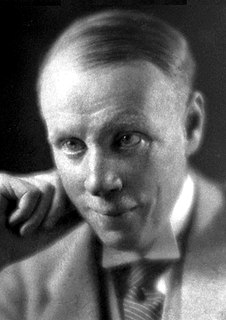
Harry Sinclair Lewis was an American writer and playwright. In 1930, he became the first writer from the United States to receive the Nobel Prize in Literature, which was awarded "for his vigorous and graphic art of description and his ability to create, with wit and humor, new types of characters." His works are known for their critical views of American capitalism and materialism between the wars. He is also respected for his strong characterizations of modern working women. H. L. Mencken wrote of him, "[If] there was ever a novelist among us with an authentic call to the trade ... it is this red-haired tornado from the Minnesota wilds."
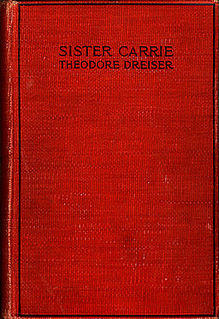
Sister Carrie (1900) is a novel by Theodore Dreiser about a young woman who moves to the big city where she starts realizing her own American Dream. She first becomes a mistress to men that she perceives as superior, but later becomes a famous actress. It has been called the "greatest of all American urban novels".
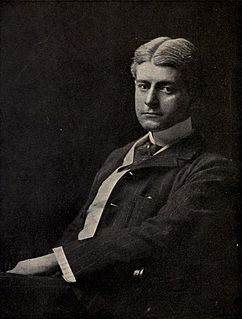
Benjamin Franklin "Frank" Norris Jr. was an American journalist and novelist during the Progressive Era, whose fiction was predominantly in the naturalist genre. His notable works include McTeague: A Story of San Francisco (1899), The Octopus: A Story of California (1901) and The Pit (1903).
Naturalism is a literary movement beginning in the late nineteenth century, similar to literary realism in its rejection of Romanticism, but distinct in its embrace of determinism, detachment, scientific objectivism, and social commentary. The movement largely traces to the theories of French author Émile Zola.

John Cowper Powys was a British philosopher, lecturer, novelist, literary critic, and poet, born in Shirley, Derbyshire, where his father was Vicar of St Michael and All Angels Parish Church in 1871–1879. Powys appeared with a volume of verse in 1896 and a first novel in 1915, but gained success only with his novel Wolf Solent in 1929. He has been seen as a successor to Thomas Hardy, and Wolf Solent, A Glastonbury Romance (1932), Weymouth Sands (1934), and Maiden Castle (1936) have been called his Wessex novels. As with Hardy landscape is important. So is elemental philosophy in his characters' lives. In 1934 he published an autobiography. Powys had success as an itinerant lecturer, in England, and in 1905–1930 in the US, where he wrote many of his novels and had several first published. He moved to Dorset, England, in 1934 with his American partner, Phyllis Playter. In 1935 they moved to Corwen, Merionethshire in Wales, where he set two novels, then in 1955 to Blaenau Ffestiniog, where he died in 1963.

An American Tragedy is a 1925 novel by American writer Theodore Dreiser. He began the manuscript in the summer of 1920, but a year later abandoned most of that text. It was based on the notorious murder of Grace Brown in 1906 and the trial of her lover. In 1923 Dreiser returned to the project, and with the help of his wife Helen and two editor-secretaries, Louise Campbell and Sally Kusell, he completed the massive novel in 1925. The book entered the public domain in the United States on January 1, 2021.
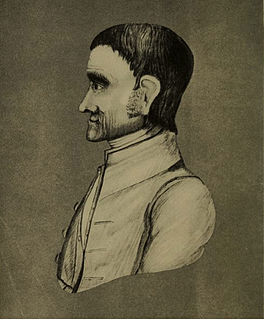
John Woolman was an American merchant, tailor, journalist, Quaker preacher, and early abolitionist during the colonial era. Based in Mount Holly, near Philadelphia, he traveled through the American frontier to preach Quaker beliefs, and advocate against slavery and the slave trade, cruelty to animals, economic injustices and oppression, and conscription. Beginning in 1755 with the outbreak of the French and Indian War, he urged tax resistance to deny support to the colonial military. In 1772, Woolman traveled to England, where he urged Quakers to support abolition of slavery.

The Call of the Wild is a short adventure novel by Jack London, published in 1903 and set in Yukon, Canada, during the 1890s Klondike Gold Rush, when strong sled dogs were in high demand. The central character of the novel is a dog named Buck. The story opens at a ranch in Santa Clara Valley, California, when Buck is stolen from his home and sold into service as a sled dog in Alaska. He becomes progressively primitive and wild in the harsh environment, where he is forced to fight to survive and dominate other dogs. By the end, he sheds the veneer of civilization, and relies on primordial instinct and learned experience to emerge as a leader in the wild.

The Titan is a novel by Theodore Dreiser, completed in 1914 as a sequel to his 1912 novel The Financier. Both books were originally a single manuscript, but the narrative's length required splitting it into two separate novels. Dreiser's manuscript of The Titan was rejected by Harper & Brothers, publisher of The Financier, due to its uncompromising realism; John Lane published the book in 1914. The Titan is the second part of Dreiser's Trilogy of Desire, a saga of ruthless businessman Frank Cowperwood. The third part of the trilogy, The Stoic, was Dreiser's final novel, published in 1947 after his death.
The American Spectator was a monthly literary magazine which made its first monthly appearance in November 1932. It was edited by George Jean Nathan, though Eugene O'Neill, Ernest Boyd, Theodore Dreiser, and James Branch Cabell were also listed as joint editors. The original editors left the publication in 1935, after which the paper continued monthly publication under new editors until October 1936. The American Spectator lasted another six months on a bimonthly before folding altogether.
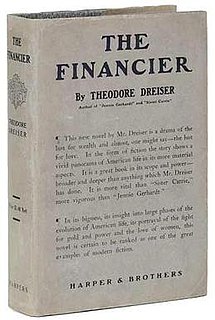
The Financier is a novel by Theodore Dreiser, based on real-life streetcar tycoon Charles Yerkes. Dreiser started writing his manuscript in 1911, and the following year published the first part of his lengthy work as The Financier. The second part appeared in 1914 as The Titan; the third volume of his Trilogy of Desire was also Dreiser's final novel, The Stoic (1947).
Camille: The Fate of a Coquette is a 1926 short film by Ralph Barton. Its development is described in Bruce Kellner's biography of Barton, The Last Dandy (1991).
John Hunt was one of the Virginia Exiles, who were a group of Philadelphia area Quakers that were forcibly exiled to Winchester, Virginia during the Revolutionary War.

Jennie Gerhardt is a 1911 novel by Theodore Dreiser.

The following events occurred in November 1900:

Metropolitan is an American magazine, published monthly from 1895 to 1925 in New York City. Former U.S. President Theodore Roosevelt was editor of the magazine during World War I when it focused on politics and literature. It was sometimes named, or called, Metropolitan Magazine or The Metropolitan, and its final issues were published as Macfadden's Fiction-Lover's Magazine.
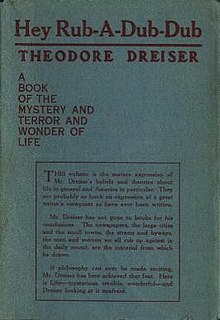
Hey Rub-a-Dub-Dub: A Book of the Mystery and Wonder and Terror of Life is a collection of twenty essays by Theodore Dreiser.

The "Genius" is a semi-autobiographical novel by Theodore Dreiser, first published in 1915. The story concerns Eugene Witla, a talented painter of strong sexual desires who grapples with his commitment to his art and the force of his erotic needs. The book sold 8,000 copies in the months immediately following publication but encountered legal difficulties when it was declared potentially obscene. Dreiser's publisher was nervous about continuing publication and recalled the book from bookstores, and the novel did not receive broad distribution until 1923. When The "Genius" was reissued by a different publisher, the firm of Horace Liveright, it immediately sold more than 40,000 copies.

An American Tragedy (1931) is a pre-Code drama film directed by Josef von Sternberg. It was produced and distributed by Paramount Pictures. The film is based on Theodore Dreiser's 1925 novel An American Tragedy and the 1926 play adaptation. These were based on the historic 1906 murder of Grace Brown by Chester Gillette at Big Moose Lake in upstate New York.